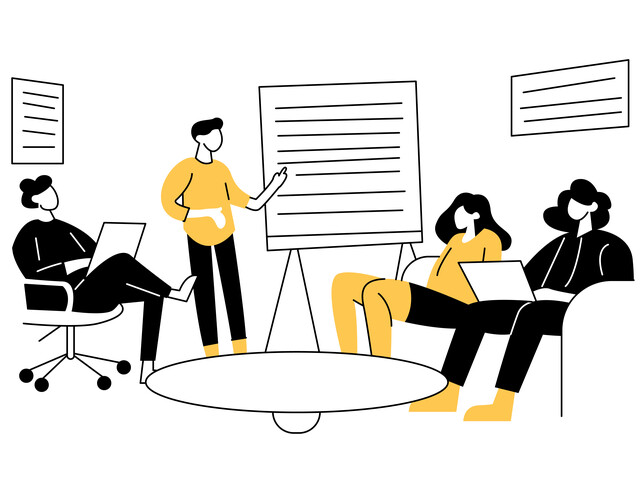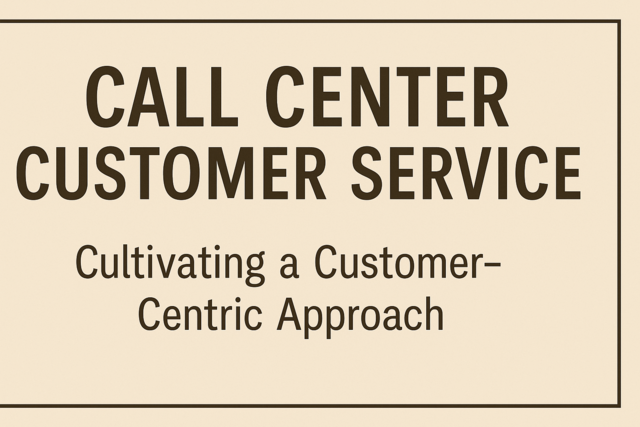Sometimes it is very hard for organizations to come to the realization that it takes more than that. At the end of the day, the secret to customer loyalty and preservation is to go beyond a policy of high-tech superiority and embrace all the key strategic elements that make your company a real winner at the service game.
Here are several key strategies you and your co-workers can use to improve your level of customer contentment and therefore your level of service:
-
When speaking to customers face to face or by phone, fax, or e-mail, give them your full attention.
-
Affirm the purpose with empathy. Do not confuse empathy with sympathy. Empathy means you understand their point of view, not that you necessarily agree with them.
-
"Listen" with your eyes and your ears; in other words, observe the body language and voice variations so you can pick up on the customer's emotional state. If you are on the phone, you will be able to pick up a lot by noting changes in their voice. Only eyes, unfortunately, can tell you what they are really feeling, and it is the "feeling" that really counts.
-
Rephrase the content of their comments, reflecting their emotions; i.e. you may say something like this: "You say that �," then add, "It appears that you feel �.. Is that right?" Keep it up until you hear those magic words: "You really do understand."
-
Model yourself after people you have observed being good listeners. Most of us have come across good listeners in our time: people who give the distinct impression that they understand, that they empathize. Think of those persons and model their behavior.
- Make eye contact.
- Do not fidget; sit still while speaking to the customer.
- Do not interrupt.
- Nod your head occasionally.
- Ask reflective questions.
- Be nonjudgmental and patient.
- Try to eliminate distractions, such as phones, pagers, etc.
Top Down Approach
While most chief executive officers, executives, managers, and/or owners would agree that superior customer relations are the cornerstone of successful businesses, it is not what they say that counts; it is what they do. A supervisor's actions can transform and invigorate staff members' commitments to improve customer service or put a damper on the enterprise.
For example, no one should follow the lead of the CEO of a large European pharmaceutical company, who gave instructions to organize all sorts of training: team-building, customer service camps, and other challenges intended to improve team spirit and camaraderie, as well as customer service. However, he refused to go to even a single event, saying that he did not need to, that it was everyone else who needed to improve! Can you imagine what that did to employee spirit at every event? All efforts went down like the proverbial lead balloon!
Managers and bosses need to lead by example and express their individual commitment to customer service by taking a roll-up-their-sleeves approach to developing superb customer service skills themselves.
Using the Feedback You Ask For
The first and most important step to becoming customer-centered is to find out what your customers actually want. Once you determine that, you can evaluate whether you are meeting those expectations.
You can discover this by conducting surveys, sending out questionnaires, and forming focus groups. In other words, find out by asking. The aforementioned methods are just some you can use, and there are different types of approaches for each method.
Once the results of conducting surveys and focus groups are tabulated, act on them. A fair percentage of companies take the first step toward gauging customer desires but do little or nothing with the data collected.
Applying this to your organization's customer service is important. The emphasis here is on the importance of not deluding yourself into thinking your ideas of what the customers want must be what they actually want! You may be right, but you could easily be wrong.
Again, let us use the same CEO mentioned previously as an example. He was absolutely sure that he knew, across the different divisions of the company, what all groups of customers would want. Even so, several surveys and focus groups were initiated to determine customer preferences in a number of company divisions. The CEO and other senior managers filled out the same questionnaires that customers completed. One part of the questionnaire asked respondents to list what they considered to be the five most important qualities in customer service.
The responses listed by the CEO and other company representatives were in all but one case completely different from those listed by customers.
The Economic Necessity of Top Customer Service
Rather than halting efforts and expenditures on improving customer service, smart executives will proactively use this economic downturn as an opportunity to regroup, reprioritize, and refine.
So what should business leaders focus on with regard to improving customer service? They could start with recession-busting strategies that generate more revenue and also cut costs, such as initiating proactive discussions with customers, online customer communities, and unified communication between customers and suppliers.
Companies need to realize that when their business depends on new clients, they are vulnerable. When economic conditions change, or a new competitor enters the market, they may suddenly see customers disappear if they do not provide exceptional customer service.
However, if they have managed to build up an inventory of loyal clients, even if those clients cut back on purchases, companies are better able to maintain at least a basic level of income and keep their business alive.
In today's tough economic climate, survival is not always about getting new customers. It's crucial to keep the customers you have extremely satisfied.





























